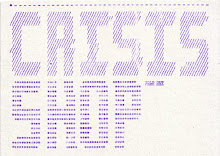 Slough has a rich history of brick making and brick fields.
Slough has a rich history of brick making and brick fields.As in the new arms the swan stands for Buckinghamshire, the the flowers for the horticulture in the borough. The brick-axes refer tothe brick-making and the sign of Uranus is from the arms of the family of Herschel of Slough, and relates to the discovery of the planet Uranus by Sir William Herschel.
The supporters are the gods Mercury and Vulcan and symbolize trade and industry.
Literature : Images and information provided by the Slough Library (AlisonD@sloughlibrary.org.uk)
I want to use the industrial connections I’ve made to produce a brick-making press or extruder (manual and/or automatic) that produces unfired bricks.
The concept is to emphasise the intelligent use of technology applied to an ancient method of building. This goes back to the relationship between the Progress and Regression I raised in my dissertation.
(iii) Umbrella theme of ‘design as the connections between things.’
The localised, cyclical relationship between a dug foundation and the clay soil used to make the bricks that builds the house. This microcosm of industry will be reflected in the way my brick making device is manufactured; namely locally, joining neighbouring processes, suppliers and materials together.
A locally produced brick press will be used to produce bricks onsite, reducing energy of transportation, firing, and waste materials in landfill. It also means that the lifecycle of the raw material is still intact and the process becomes ‘closed loop.’
A reconnection between the activities of brick making and brick laying which have been separated through industrialisation of the process over last 150 years. This localised brick press device could have ramifications for the tools used to build brick constructions and for the corresponding architecture. Perhaps there is scope to develop these designed languages as part of the project as well ? (time permitting).
(iv) Other considerations:
Sustainable context. Sustainable Slough;
This project will emphasise the sustainable credentials of a hi-tech trading estate powered by a renewable power station that creates a device for producing local bricks that don’t require firing.













No comments:
Post a Comment